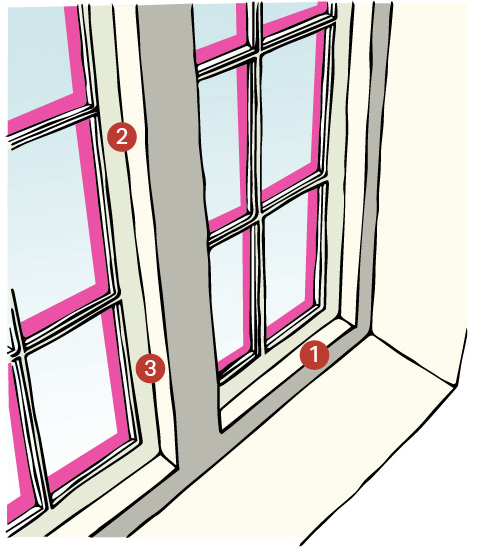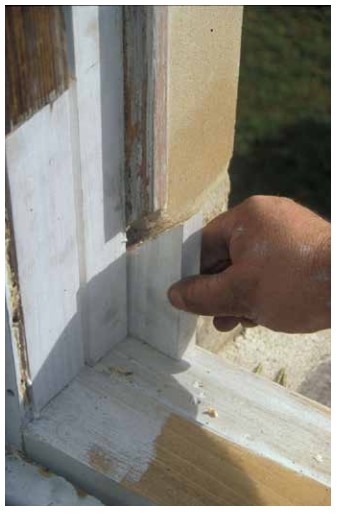
1. The gap between casements and the window surround should be improved to reduce air movement.
2. A simple mastic bead and release tape can components and can be part of the routine re-decoration.
3. Proprietary pin-on or self adhesive weather-strip components are available which can be fitted at the junction between casement and surround. Alternatively, professionally fitted systems are available which can be fully rebated into to the joinery.
Timber casement windows typically have opening frames which sit within a timber surround when closed. Normally hinged to one side, these frames are designed to be a close fit with the surround to keep weather out, but a gap has to exist to allow the window to open.
Over time and through wear this gap can increase in size. Warm air can be lost from the building through this gap and cold air can enter.
In addition to ensuring that the window is well maintained simple upgrade techniques can be used to improve the situation.
A simple mastic bead and release tape will do much to improve the fit between window components and can be installed as part of the routine decoration of the window.
Proprietary draught-strip components are also available to provide a combination of compression seals and wiping seals to effectively close the air path at the perimeter of a casement window.
Before installing any draught-proofing to historic windows, identify and make any repairs that are needed. Photo copyright: Historic England.
A significant amount of the heat lost through a casement window can be through air-leakage or draughts so addressing this makes good sense.
Recent research has shown that placing the window in good repair can reduce air leakage by a third and draught proofing will substantially improve on this.
When combined with other measures, such as secondary glazing, blinds or heavy curtains the benefit from simple draughtproofing can be considerable.
The simplest draughtproofing measures are DIY level installations and are therefore quite inexpensive. A mastic and tape decoration upgrade can be installed for less than £5.
Proprietary weather seals are available which vary in cost between simple self-adhesive profiles for less than £1 per metre, to pin-on, surface-fixed brush seals for around £2 to £3 per metre.
Professionally fitted systems are also available, which although considerably more costly will normally be fitted as part of a comprehensive window overhaul.
Listed Building Consent is not normally required, unless the appearance of the room would be significantly affected.
Any mastic-type draught proofing should be as discreet as possible in colour, for example clear, or matching the surrounding colour as closely as possible.
Unobtrusive products should always be used.
Loss of historic fabric should be avoided.
Professional installation will be needed for products such as rebated edge seals.
Care should be taken to ensure the strength of the frame is not compromised. This is particularly the case with slender late 18th century sash windows where the timber sections are often very narrow.
We support careful draughtproofing of windows where there is no detrimental impact on the special architectural or historic interest of the building or historic fabric.
In the light of the Climate Emergency, we will generally permit and encourage alterations on listed buildings, with special regard to the the following:
- Preserving the building, its setting or any features of special architectural or historic interest which it possesses
- Preserving or enhancing the character of a conservation area
- Respecting the significance of any non-designated heritage asset
Draughtproofing Windows and Doors from Historic England
Draughtproofing Older Buildings also from Historic England

